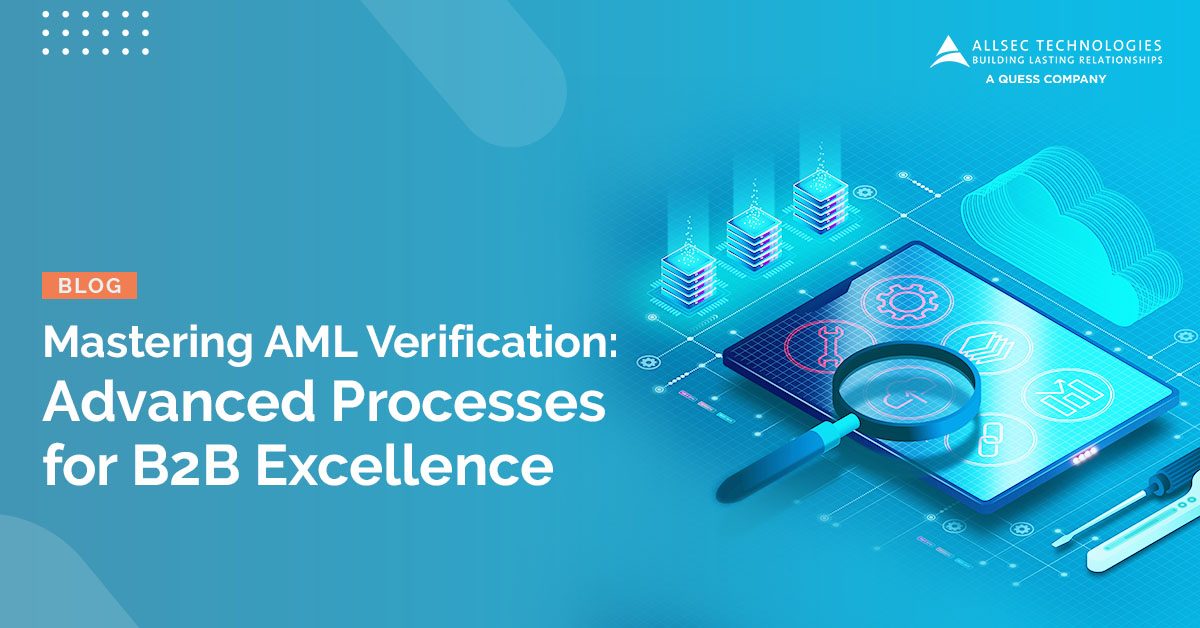
In the complex world of B2B commerce, the risks of money laundering, financial crimes, and fraud are pervasive. With transactions often substantial and multi-faceted, businesses face the challenge of safeguarding their financial health, reputation, and regulatory compliance. This blog delves into advanced AML (Anti-Money Laundering) verification processes, exploring key strategies, industry trends, and the imperative role of technology in fortifying defenses against money laundering risks.
Strategies for Effective AML Verification
- Customer Due Diligence (CDD) and Enhanced Due Diligence (EDD)
Customer Due Diligence (CDD) involves gathering and validating key customer details like name, address, and government ID. Enhanced Due Diligence (EDD) is a stricter process designed for high-risk customers. It goes beyond basic information, prioritizing privacy while acquiring additional data for a thorough understanding. This in-depth analysis aids in identifying politically exposed persons (PEPs) and entities with an increased risk of money laundering, reducing the likelihood of false negatives in high-risk B2B transactions.
- Transaction Monitoring and AML Screening
Transaction Monitoring, powered by AML-as-a-Service technology, ensures real-time tracking and utilizes AI for enhanced accuracy. AML Screening cross-references customer lists with global watchlists to identify high-risk customers promptly. The integration of AI in Transaction Monitoring involves real-time tracking through machine learning, streamlining verification. Data Analytics and AI analyze extensive data, identifying money laundering patterns and proactively evolving to combat emerging threats.
- Blockchain Technology for Transparency
Blockchain enhances Anti-Money Laundering (AML) verification with unparalleled transparency. It creates immutable transaction records, improving traceability and accountability. This innovation simplifies B2B verification by offering easily accessible transaction histories. The decentralized and tamper-proof nature of blockchain ensures an auditable record, instilling confidence in transaction legitimacy and reinforcing AML verification integrity.
- Collaboration and Information Sharing
Effective Anti-Money Laundering (AML) verification relies on collaboration and information sharing among financial institutions and regulatory bodies. This fosters swift exchange of valuable information, enabling rapid detection and prevention of money laundering activities. Such collaboration enhances the collective ability to safeguard individual businesses and maintain the integrity of the broader financial system against financial crimes.
Industry Trends in AML Verification Support Services for 2024
- Global Standardization: Increased focus on international compliance through global standards for identity verification, data privacy, and risk management.
- Enhanced Data Security: Emphasis on improved data storage and transmission protocols, encryption, and decentralized storage systems for enhanced data security.
- Customizable Solutions for Competition: Growing demand for modular AML verification platforms tailored to the specific needs of different organizations.
- Real-Time Monitoring: Increasing importance of real-time monitoring using machine learning algorithms to detect anomalies and flag potential fraud.
- User Experience Enhancement: Focus on improving the user experience with streamlined verification processes, user-friendly interfaces, and better customer support.
Conclusion
Mastering AML verification emerges as a multifaceted challenge necessitating strategic, technological, and collaborative solutions. Amidst the complexities of B2B transactions, implementing advanced processes, aligning with industry trends, and fostering collaboration fortify defenses against money laundering risks. In an era where financial security is paramount, staying ahead in AML verification transcends regulatory compliance; it represents a pledge to uphold the integrity of the global financial system. Notably, with money laundering estimated at a staggering $2 trillion annually, the threat to the financial world underscores the critical importance of these concerted efforts in combating illicit financial activities and ensuring a secure financial landscape.


